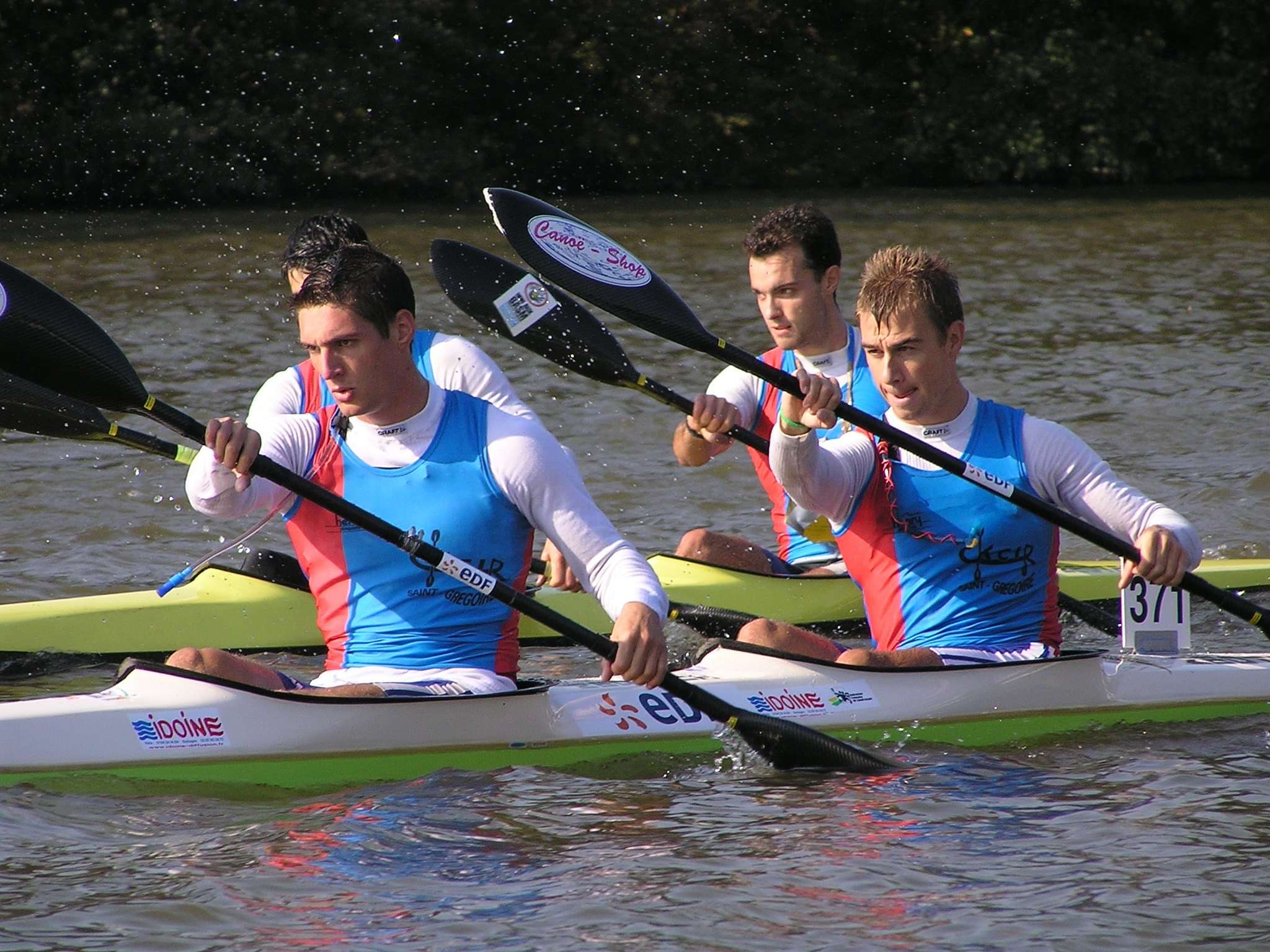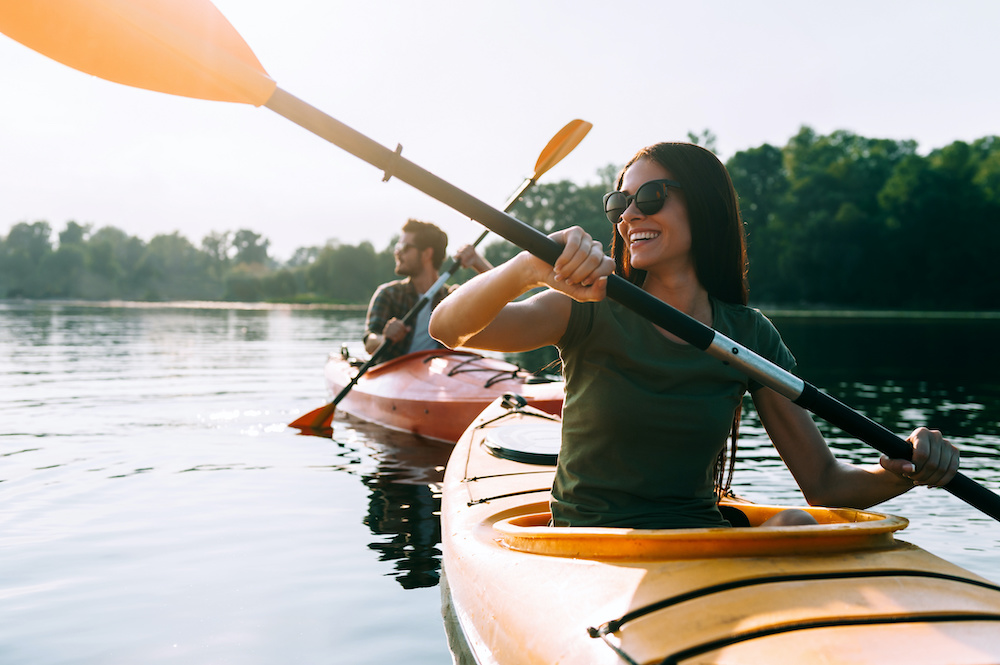I. Introduction to Kayaking and Canoeing

A. Overview of Kayaking as a Paddlesport
Kayaking is a popular paddlesport that involves propelling a kayak through water using a double-bladed paddle. It can be done in various water environments, including rivers, lakes, and oceans. Kayaking offers opportunities for recreation, adventure, and exploration.
B. Overview of Canoeing as a Paddlesport
Canoeing is another popular paddlesport that involves propelling a canoe through water using a single-bladed paddle. Canoeing can be done on calm lakes, rivers, and even in whitewater conditions. It offers opportunities for relaxation, fishing, and connecting with nature.
C. Understanding the Distinct Characteristics of Kayaking and Canoeing
While both kayaking and canoeing involve paddling on water, they have distinct characteristics. Kayaks are typically smaller and more maneuverable, with a closed-top design and seating inside the boat. Canoes are larger and offer more space, with an open-top design and seating on benches or kneeling on the floor.
II. Boat Design and Structure
A. Exploring the Design Characteristics of a Kayak
- Sit-on-Top vs. Sit-In Kayaks
Kayaks can be either sit-on-top or sit-in designs. Sit-on-top kayaks have an open seating area and are popular for recreational use, fishing, and warm-water paddling. Sit-in kayaks have an enclosed cockpit and are commonly used for touring and whitewater kayaking.
- Narrow Hull and Pointed Bow
Kayaks typically have a narrow hull design, which enhances speed and maneuverability. The pointed bow helps to cut through water and reduce resistance, allowing for efficient movement through various water conditions.
B. Exploring the Design Characteristics of a Canoe
- Open-Top Hull and Wide Bottom
Canoes have an open-top hull design, allowing for easy entry and exit. The wide bottom provides stability and ample space for passengers, gear, and equipment.
- Higher Sides and Flared Bow
Canoes have higher sides compared to kayaks, providing more protection from water splashing into the boat. The flared bow helps deflect water and provides additional buoyancy, making canoes suitable for rougher water conditions.
III. Paddles and Paddling Techniques
A. Understanding Kayaking Paddles and Techniques
- Double-Bladed Paddles
Kayaks are propelled using double-bladed paddles, which have blades on both ends of the shaft. This allows for efficient and balanced strokes on both sides of the kayak.
- Techniques for Efficient Forward and Turning Strokes
Kayakers use a variety of strokes and techniques for efficient forward propulsion and turning. These include the forward stroke, sweep stroke, draw stroke, and braces, which help control the direction and stability of the kayak.
B. Understanding Canoeing Paddles and Techniques
- Single-Bladed Paddles
Canoeists use single-bladed paddles, which have a blade on one end of the shaft. The paddle is alternated between sides for propulsion and steering.
- Techniques for J-Stroke and Maneuvering
Canoeists use a technique called the J-stroke, which combines a forward stroke with a slight turning motion to maintain a straight course. Other strokes, such as the pry stroke and rudder stroke, are used for maneuvering and turning the canoe.
IV. Seating and Positioning
A. Seating in a Kayak
- Sitting Low and with Legs Extended
In a kayak, the paddler sits low in the cockpit with their legs extended forward. This low seating position provides stability and a lower center of gravity, allowing for better balance and control.
- Utilizing Footpegs for Stability and Control
Many kayaks have adjustable footpegs or footrests that paddlers can push against for added stability and control. These footpegs help transfer power to the paddle strokes and provide balance when maneuvering.
B. Seating in a Canoe
- Kneeling or Sitting on a Raised Seat
In a canoe, paddlers have the option to either kneel or sit on a raised seat. Kneeling provides a lower center of gravity and better balance, while sitting on a raised seat allows for a more comfortable and relaxed paddling position.
- Maintaining Balance and Stability with Kneeling Thwarts or Yokes
To maintain balance and stability while kneeling in a canoe, paddlers can utilize kneeling thwarts or yokes. These crossbars or supports are positioned between the gunwales and provide stability when maneuvering the canoe.
V. Stability and Maneuverability
A. Stability in Kayaking
- Narrow Hull Provides Enhanced Secondary Stability
Kayaks with a narrow hull provide enhanced secondary stability, meaning they are stable when tipped on their side. This allows kayakers to edge the kayak and perform more advanced maneuvers with confidence.
- Quick and Agile Maneuvering in Whitewater or Sea Kayaking
Kayaks are known for their quick and agile maneuvering capabilities. This makes them well-suited for navigating whitewater rapids or sea kayaking, where quick turns and adjustments are necessary.
B. Stability in Canoeing
- Wider Bottom Provides Initial Stability
Canoes, with their wider bottoms, provide greater initial stability. This stability is beneficial for beginners or those looking for a more relaxed and stable paddling experience.
- Slower but More Stable for Calm Lakes or Rivers
Canoes are generally slower than kayaks but offer more stability, making them ideal for calm lakes and slow-moving rivers. They provide a comfortable and stable platform for recreational paddling and fishing.
VI. Purpose and Use
A. Kayaking Applications and Specialties
- Whitewater Kayaking
Whitewater kayaking involves navigating fast-moving rivers with rapids and obstacles. It requires advanced paddling skills, agility, and the ability to read and react to changing water conditions.
- Sea Kayaking and Touring
Sea kayaking and touring involve paddling in open water, such as oceans, bays, and large lakes. It offers opportunities for exploration, multi-day trips, and wildlife observation. Sea kayaks are designed for stability, storage capacity, and efficiency in long-distance paddling.
B. Canoeing Applications and Specialties
- Recreational Canoeing
Recreational canoeing is popular for leisurely paddling trips on calm lakes, ponds, and slow-moving rivers. It offers opportunities for relaxation, fishing, and family outings.
- Canoe Camping and Expedition
Canoe camping and expedition involve combining canoeing with camping, allowing paddlers to explore remote areas and spend nights along the water. Canoes provide ample storage space for gear, making them suitable for multi-day trips.
While both kayaking and canoeing are paddlesports that offer unique experiences on the water, they differ in boat design, paddling techniques, seating, stability, maneuverability, purpose, and use. Kayaking tends to be more focused on agility and versatility, with its sit-on-top or sit-in design and double-bladed paddle, whereas canoeing offers a more stable and spacious platform with its open-top design and single-bladed paddle. Choosing between kayaking and canoeing depends on personal preferences, water conditions, and desired paddling experiences.
